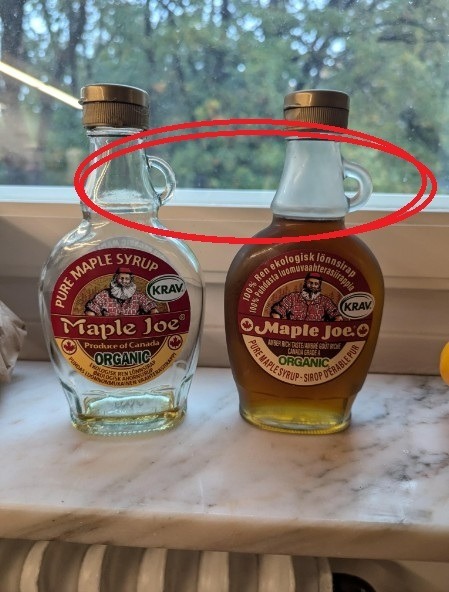ADVERTISEMENT
**The Fascinating Story Behind Tiny Handles on Maple Syrup Bottles**
Maple syrup, the golden, sweet nectar derived from the sap of sugar maple trees, is a beloved treat. Whether drizzled over pancakes, waffles, or French toast, maple syrup has become a staple in many households, especially in the United States and Canada, where it has a long-standing history. However, as ubiquitous as maple syrup is, have you ever noticed the tiny handle on the side of the bottle? What is the purpose of this seemingly quirky design feature? It turns out that the little handle on maple syrup bottles is not only a charming feature, but it also serves practical purposes—rooted in history, marketing, and functionality.
In this article, we will explore the history of maple syrup production, the reason behind the tiny handles on maple syrup bottles, and how this seemingly small detail plays a larger role in both the consumer experience and the bottle’s design. We’ll also look at how maple syrup bottles have evolved over time and why certain design elements, like the handle, have persisted despite changes in packaging technology.
—
### **1. The Origins of Maple Syrup Production**
Before we dive into the history of the maple syrup bottle and its tiny handle, let’s first understand the origins of maple syrup itself. The production of maple syrup dates back centuries to Indigenous peoples of North America. Native American tribes, such as the Algonquin, Abenaki, and Iroquois, were the first to discover the process of collecting sap from maple trees and boiling it down to create syrup. They used tools made from hollowed-out logs to collect the sap, and often heated stones in a fire to help evaporate the liquid and concentrate the sweetness.
The process of tapping maple trees for sap and transforming it into syrup was passed down to European settlers in the 17th century. Over time, the maple syrup industry grew, and commercial production methods evolved. By the 19th century, the introduction of modern sugar maple tapping technology, such as metal taps and more efficient boiling systems, helped the industry to expand. Today, maple syrup is made in regions with large populations of sugar maples, such as parts of Canada, Vermont, New York, and other areas of the northeastern United States.
—
### **2. The Evolution of Maple Syrup Bottles**
In the early days of maple syrup production, the syrup was typically stored and transported in glass jars, ceramic crocks, or wooden containers. However, the mass production of maple syrup and the need to package it in a way that was both functional and visually appealing led to the development of more specialized bottles. The introduction of glass bottles for packaging maple syrup in the early 20th century was a significant turning point in the industry. These bottles offered better preservation of the syrup and improved branding opportunities for producers.
As maple syrup became more popular and widely distributed, packaging designers began to focus on the shape and functionality of the bottles. In the mid-1900s, the iconic maple syrup bottle design, often in the shape of a jug or an elegant flask, began to emerge. The bottles were made from glass and featured a small handle on the side. This distinctive handle, though small in size, would soon become a hallmark of the maple syrup bottle design.
But why the handle?
For Complete Cooking STEPS Please Head On Over To Next Page Or Open button (>) and don’t forget to SHARE with your Facebook friends
